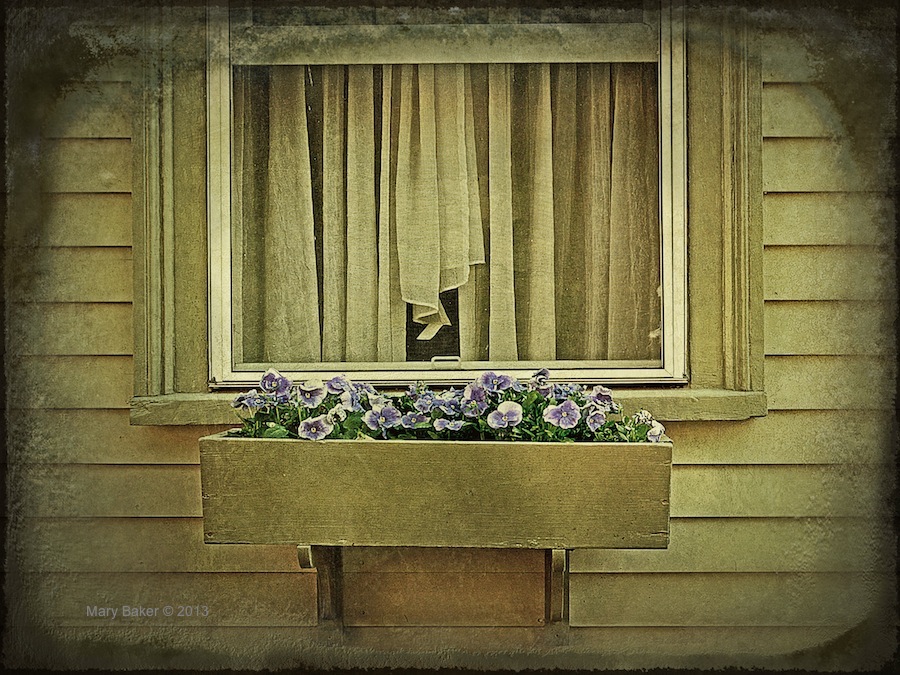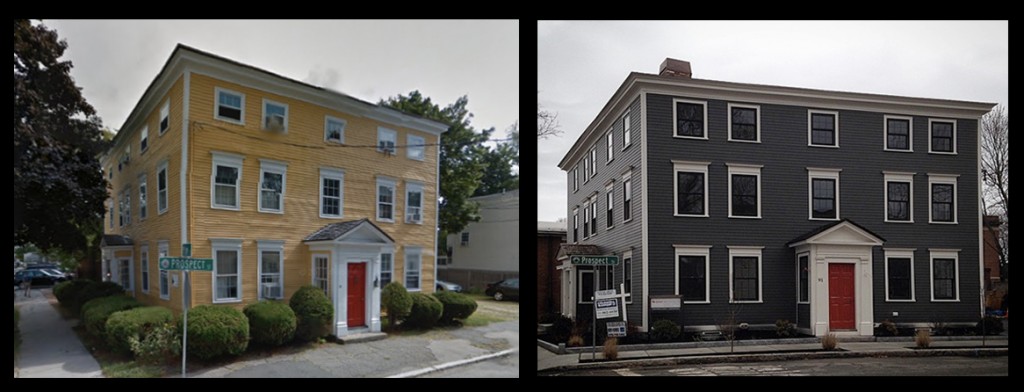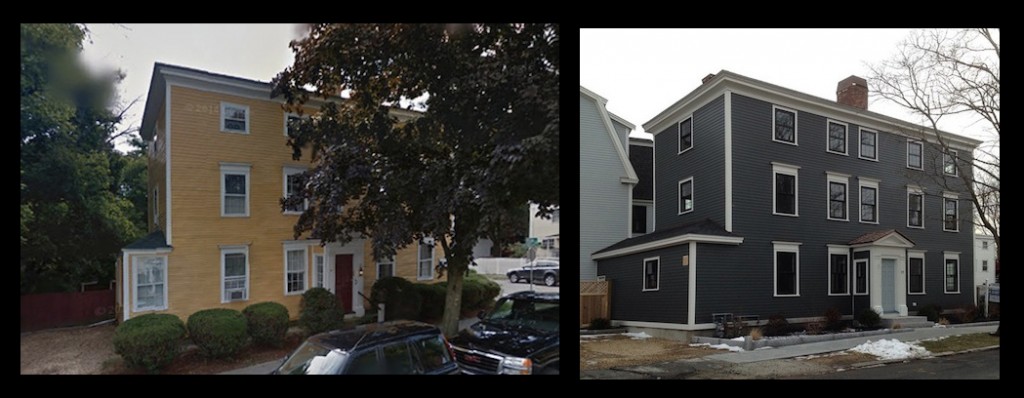Is it possible for historic preservation to have gray areas? Not to be absolutely black and white?
The subject here is windows.
I’ve lived in old houses, and quite frankly old windows, in the houses I’ve lived in, were hard to get up and down. But the joy of looking through old pane wavy glass windows is remarkable. I’ve seen friends who did a beautiful restoration and put in new windows, their delight when they showed me how easy they were to put up and down was palatable.
When I talk to historic preservationists, the impression I often get is that keeping old windows is the only way to go. I found this article on the web, a website for old houses, and it discusses the pros and cons of keeping old windows. And remarkably it is nonjudgmental. It is one of the best and most balanced articles that I’ve ever read.

Window with pansies, digital image © Mary Baker
Restore or Replace? The Options for Old Windows
Many old homes boast their original wood windows, and in some cases, the architectural detail is magnificent. Unfortunately, the older the windows are, the less likely they are energy-efficient. Upgrading the windows means either restoring them to their original condition or opting for replacement windows.
Window Replacement or Restoration?
Deciding between window replacement and window restoration can be a tough choice. Study the pros and cons of each option before you make a decision.
Replacement Windows
• Replacement windows can be well-insulated, cutting down on energy costs and noise.
• You can open the windows with minimal effort, and they stay open, unlike old windows with no springs or pulley systems.
• You can replicate the architectural designs of old windows, although extensive designs might become a bit pricey.
• Efficient, thorough weather stripping is a given on new replacement windows.
• You can install replacement windows quickly, which leads to less disruption for those who live there.
• Removing the existing windows can damage the surrounding wallboards, stucco, or plaster and can lead to expensive repairs.
• Replacement windows with pulley systems, bubbled glass, and other historic details necessitate a custom order and can become very expensive.
• If you are seeking a landmark or historic designation, reviews of the window replacement details can take quite a bit of time, and might hold up the work schedule.
Window Restoration
• The original materials and design are preserved.
• Most historic windows were built of durable wood taken from large trees, and in some cases, those woods are now extremely rare–some species have died out or are not plentiful enough for new construction.
• Any damage to the surrounding area during a restoration is minimal, and usually only cosmetic.
• Unique, beautiful original glass details can be left undisturbed.
• If the windows are in good shape to begin with, restoration might be surprisingly affordable.
• If the historic windows are single-pane, simply restoring them provides no significant energy savings.
• Restoration can take a great deal of time.
• Old windows are often painted with lead paint and require costly, specialized removal.
Doing it Right
Professional installation for replacement windows is a must to ensure the full value of energy-efficient upgrades. If you choose to restore the windows instead, restoration professionals can make certain your windows are as secure and energy-efficient as possible while maintaining all the unique features so important to a historic home.
Whether you choose to replace or restore the beautiful windows in your old home, hire a professional to get the job done right!
About the Author
Shannon Dauphin is a freelance writer based near Nashville, Tennessee. Her house was built in 1901, so home repair and renovation have become her hobbies.
77 Lime Street

77 Lime Street from Prospect Street, a before and after comparison (the before photograph is from Google maps)
The rancor over the renovation on 77 Lime Street mystifies me.
This is the deliberation from the ZBA meeting in June of 2014:
Mr. Ciampitti commented on the thorough and detailed presentation. He agreed that it is rare to see a historic structure renovation with a reduction in massing and scale. The proposed alteration will exacerbate non-conformities and increases open space. This is hard to do! He was prepared to support.
Mr. LaBay agreed. He commented that there were no neighbors appearing in opposition. Both Mr. Harris and Ms. Niketic noted the sensitivity of the owner to historic structures.
Mr. Pennington agreed. The presentation was well articulated. His only concern coming in was intense massing, and that was not the case. It will be a successful project in the way in the addition is distinct and not to be confused with the original historic structure. He was prepared to support.
A year later, a member of the ZBA had this to say:
Mr. LaBay was pained to have to say that this was not what he thought we were approving a year ago.
And someone speaking at that meeting had was, “angered and saddened driving by this rehab.”
I think for this particular project it was one of expectations. The historic preservationists in town expected the renovation to be done a certain way, it was not done the way that they had expected. It was done differently. There has been a renovation of a house on High Street that was done exactly the same way, the expectations of historic preservationists were “low,” I think, and I’ve heard good to great things about the results.
And as a btw, one of the many things that historic preservationists are upset about is that the windows on the third floor are not the original size. I asked, and that is because, if a renovation exceeds a certain percentage, code kicks in, and modern code calls for larger windows, that is why larger windows are on the third floor. And the windows are painted black instead of white (which is the new “thing” for windows), and I think the black color makes them look larger, although (and I asked), except for the third floor, they are exacly the same size.
I’ve put a side by side comparison of the before and after comparisons of 77 Lime Street from Prospsect Street, and I am by no means horrified by the results.

77 LIme from Lime Street, compare before and after, before image is from Google Maps
Editor’s Note: And I’ve just included the before and after comparisons of 77 Lime Street from Lime Street. The before image is from Google Maps.
And I’ve known Gus Harrington and his wife Sue for over 30 years. Among other things Gus works at Historic New England, previously known as the Society for the Preservation of New England Antiquities (SPNEA). Gus is the owner of 77 Lime Street and I’ve talked to him a great deal on my daily walks. I live in the neighborhood and take a walk through Newburyport’s South End every day, and 77 Lime Street is on my “route.” I have been constantly curious about this project and try and ask questions and have a dialogue about the process. And because I know and trust Gus, maybe I’ve been more open minded. I think an ongoing dialogue and “listening” on any project is important for community harmony, something that I strive for and is often difficult and at times down right impossible to achieve. But we are a community, and I would much rather have constructive dialogue and an effort to problem-solve than community animosity.